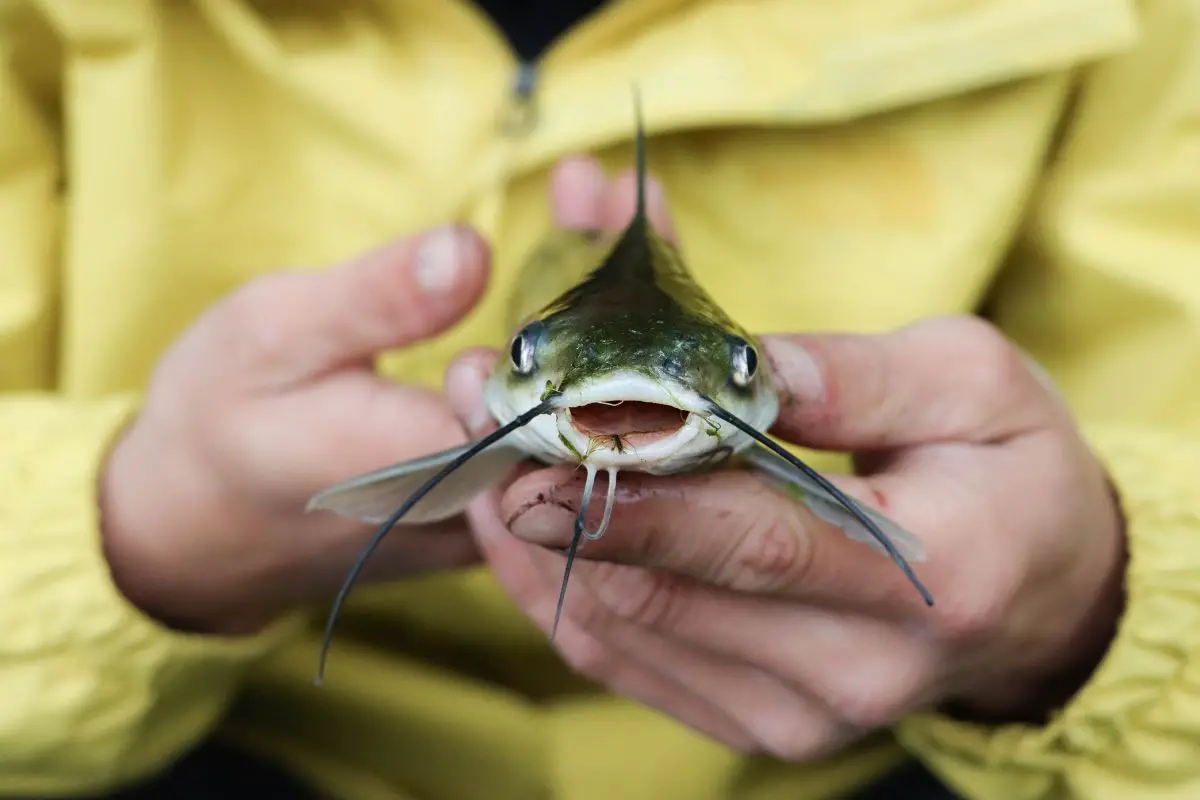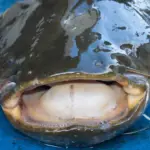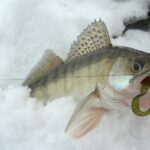There are a lot of differing opinions when it comes to a discussion about how long catfish can survive out of water.
This could be because there are nearly 3,000 species of catfish. Over 30 of these call North American waters their home. For the purpose of this article, our focus will be on North American catfish. Catfish species in North America tend to be in isolated areas, with relatively small populations.
![How Long Can Catfish Live Out Of Water? [Easy Read]](https://irvinelake.net/wp-content/uploads/2022/06/How-Long-Can-Catfish-Live-Out-Of-Water-Easy-Read.jpg)
Seasoned anglers refer to the most popular catfish species as The Big Three. These three most popular species are flathead catfish, blue catfish, and channel catfish.
Most anglers will tell you that when they go on the hunt for catfish, they’ll look for one of these three species. However, there are also a number of other species of fish with decent sized populations in North American waters.
Catfish are renowned for their hardy nature. This is only emphasized when you compare their survival time outside of water to other fish species. For instance, the longest recorded length of time a catfish survived out of the water stands at 18 hours!
However, this is the exception rather than the rule. We’ll go into more detail regarding this record a little further down the article.For now, it’s worth keeping in mind that If you keep a catfish in the right conditions, you can expect it to live for up to 3 or maybe 4 hours.
If you intend on cooking and eating your catch, keeping it alive is essential in order for the fish to stay fresh for as long as possible
In this article, we’ll be discussing the average time frames catfish can live out of water, along with some methods used to keep them alive for longer periods of time.
We’ve also included a helpful section on how to keep catfish fresh for cooking.
Average Lifespan Of Catfish When Removed From Water
As mentioned, the longest recorded time a catfish was able to survive out of the water stands at 18 hours. However, the average life expectancy of a catfish out of its habitat, in most cases, is a few hours, never really more than four.
As we mentioned in the introduction, catfish are a hardy species of fish. Nearly all species of fish cannot survive longer than a few minutes out of water. Some species even suffocate the moment they are taken out of the water.
What makes catfish unique in this regard is that catfish have developed a special organ, called a Suprabranchial organ. This organ acts like an accessory to the catfish’s respiratory system. They’re usually located over the gills of the fish and enable the catfish to absorb oxygen from the atmosphere.
At this point, it’s worth clarifying that there are a number of caveats to the statements above, The first one being that the condition of the catfish when caught plays a role in how long it will survive out of the water.
There are variations in the time frame that are dependent on the particular species of catfish.
Alongside these variations, as you might expect, sick or damaged catfish won’t survive as long as a healthy one. Catfish in this condition most likely won’t survive for longer than an hour.
There are also particular conditions that need to be met in order for a catfish to live outside water. When these conditions are almost perfect, you could get a timeframe closer to the 18-hour record. One way to mimic these conditions is the use of a “live well.” We’ll discuss them in more detail in the next section.
How To Keep Catfish Alive Once They’ve Been Caught: The “Live Well” Method
Before we get into the details of the use of a “live well” to keep caught catfish alive, it’s worth defining what a “live well” is. Seasoned/professional anglers make use of a live (as in listening to live music) well to keep their catch(s) supported once they’re out of the water.
Some of these live wells come with advanced features like filter systems or aerators (systems that oxygenate the water).
Whilst live wells are generally the same shape, a good spacious live well that is kept at a consistent temperature and well-oxygenated will ensure that the catfish stays alive for as long as possible.
The temperature of the live well plays an important role in keeping the catfish, or any fish for that matter, alive. The trick is to try and match the temperature of the water you caught the catfish in.
If the catfish is exposed to high or low temperatures, it will go into shock. If this happens, it will become distressed and there’s a high chance it will die. This is not ideal, especially if you want to cook and eat it.
How To Keep Catfish Fresh For Cooking
Like any other fish species, catfish are at their tastiest when they are fresh.
Being aware of how long the catfish can live outside the water is essential to keeping it as fresh as possible. There is also the importance of how the catfish is kept and in what conditions, as these also play a role in the flavor once cooked.
The key is to keep the catfish alive for as long as possible once it has been caught.
As mentioned earlier, live wells are a great way to keep any fish caught alive. That being said, a bucket of water can work just as well, although these are best for short periods of time. Changing the water in the bucket regularly helps keep the water fresh, the catfish happy, and prevents it from getting too hot for them.
Once you’ve gotten the catch home, you should kill the fish quickly and as humanely as possible. In addition, cooking it as soon as it has been killed will yield the tastiest results.
However, you might need to prolong the fish’s lifespan a little longer before cooking it. Many anglers use their bathtubs full of water for this.
If it’s not possible for you to keep the fish alive in water, and you’ve killed it, place it on ice or in a fridge. Keeping the meat cool is so important as it prevents it from spoiling and helps retain the flavor.
If you’re not in a position to eat the fish straight away, or even in a couple of days, the next best thing is to store it in the freezer. The only downside is that frozen fish isn’t as good as fresh fish when cooked.

A Note About The “Catch And Release” Method
If you’ve just started fishing, or do not intend to eat your catch, you’ll most likely be using the catch and release method.
This method requires that the catfish (or any fish you’ve caught and intend to release) must remain unharmed.
To this end it’s important to keep in mind that the fish should be kept out of the water for at least the amount of time possible, to maximize its chances of survival.
We’d recommend that you keep them out of the water just long enough to safely remove the hook and (if you’re so inclined) take a picture.
On that note, it’s important to use suitable hooks if you are catching and releasing. There are hooks designed for this purpose that cause minimal damage to the fish.
When you’ve hooked the catfish, use a large net to get it out of the water, as this allows you the maximum amount of control to get it out safely. Once you’ve unhooked it and marveled at it, it’s time to return it to the water. This should always be done as carefully as possible. Don’t throw the fish back in or handle it roughly.
Summing Up
Keeping a catfish alive once it’s been caught is important for a couple of reasons.
If you’re catching and then releasing the fish back into the water, knowing the time frame you have to work with and what you might need to do to keep it alive is crucial.
This is because when catching and releasing fish, the fish must return to the water in a healthy state.If you intend on eating your catch, working to the time frames set out above will help you to get the most out of your catfish in terms of flavor.
When compared to other species of fish, catfish are a sturdy species that can cope rather well with being out of the water for around 3 to 4 hours. However, they will die quickly if not kept in the right conditions.
- Do You Need An Indicator For Nymph Fishing? - November 16, 2023
- Fishing Safety Tips For Families - September 25, 2023
- What Is The Best Time To Night Fish At A Lake? - September 18, 2023










